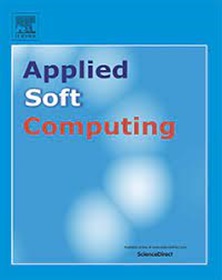An empirical study on optimizing binary spiking neural networks for neuromorphic computing
IF 7.2
1区 计算机科学
Q1 COMPUTER SCIENCE, ARTIFICIAL INTELLIGENCE
引用次数: 0
Abstract
Spiking neural networks process information using asynchronous spikes between neurons, making them ideal for handling spatiotemporal data from neuromorphic sensors and have shown superior performance in low-latency and low-power computing applications. However, current neuromorphic computing faces challenges such as high synaptic memory usage and complex synapse calculations, with the training process optimization lacking a solid foundation. Here, we present a hardware-friendly weight-binarized spiking neural network to reduce storage needs, accelerate optimization, and enhance computational efficiency. During training, weight binarization is applied to reduce memory size and access drastically. Meanwhile, we employ a hybrid optimizer that combines the Adam method with stochastic gradient descent to address the convergence challenges that arise from gradient sparsity due to the use of binary weights. During inference, a simple shift-based batch normalization algorithm is introduced to achieve the effect equivalent to the computationally expensive BN with low accuracy loss. Then, we empirically identify and study the effectiveness of various ad-hoc techniques on neuromorphic recognition tasks as a case study, providing best practices for optimization. To the best of our knowledge, this is the first work using systematic comparisons to reveal how commonly employed tricks are effective for training binary spiking neural networks. The implementations will be open-sourced on GitHub.

面向神经形态计算的二元尖峰神经网络优化实证研究
尖峰神经网络使用神经元之间的异步尖峰处理信息,使其成为处理来自神经形态传感器的时空数据的理想选择,并在低延迟和低功耗计算应用中显示出卓越的性能。然而,当前的神经形态计算面临着突触内存占用高、突触计算复杂等挑战,训练过程优化缺乏坚实的基础。在这里,我们提出了一个硬件友好的权重二值化峰值神经网络,以减少存储需求,加速优化,提高计算效率。在训练过程中,采用权值二值化来大幅度减少内存大小和访问。同时,我们采用了一种混合优化器,将Adam方法与随机梯度下降相结合,以解决由于使用二元权重而引起的梯度稀疏性带来的收敛挑战。在推理过程中,引入了一种简单的基于移位的批处理归一化算法,以达到与计算代价昂贵的BN相当的效果,并且精度损失低。然后,我们以实证研究为例,确定和研究了各种特设技术在神经形态识别任务中的有效性,为优化提供了最佳实践。据我们所知,这是第一个使用系统比较来揭示常用技巧如何有效训练二进制尖峰神经网络的工作。这些实现将在GitHub上开源。
本文章由计算机程序翻译,如有差异,请以英文原文为准。
求助全文
约1分钟内获得全文
求助全文
来源期刊

Applied Soft Computing
工程技术-计算机:跨学科应用
CiteScore
15.80
自引率
6.90%
发文量
874
审稿时长
10.9 months
期刊介绍:
Applied Soft Computing is an international journal promoting an integrated view of soft computing to solve real life problems.The focus is to publish the highest quality research in application and convergence of the areas of Fuzzy Logic, Neural Networks, Evolutionary Computing, Rough Sets and other similar techniques to address real world complexities.
Applied Soft Computing is a rolling publication: articles are published as soon as the editor-in-chief has accepted them. Therefore, the web site will continuously be updated with new articles and the publication time will be short.
 求助内容:
求助内容: 应助结果提醒方式:
应助结果提醒方式:


